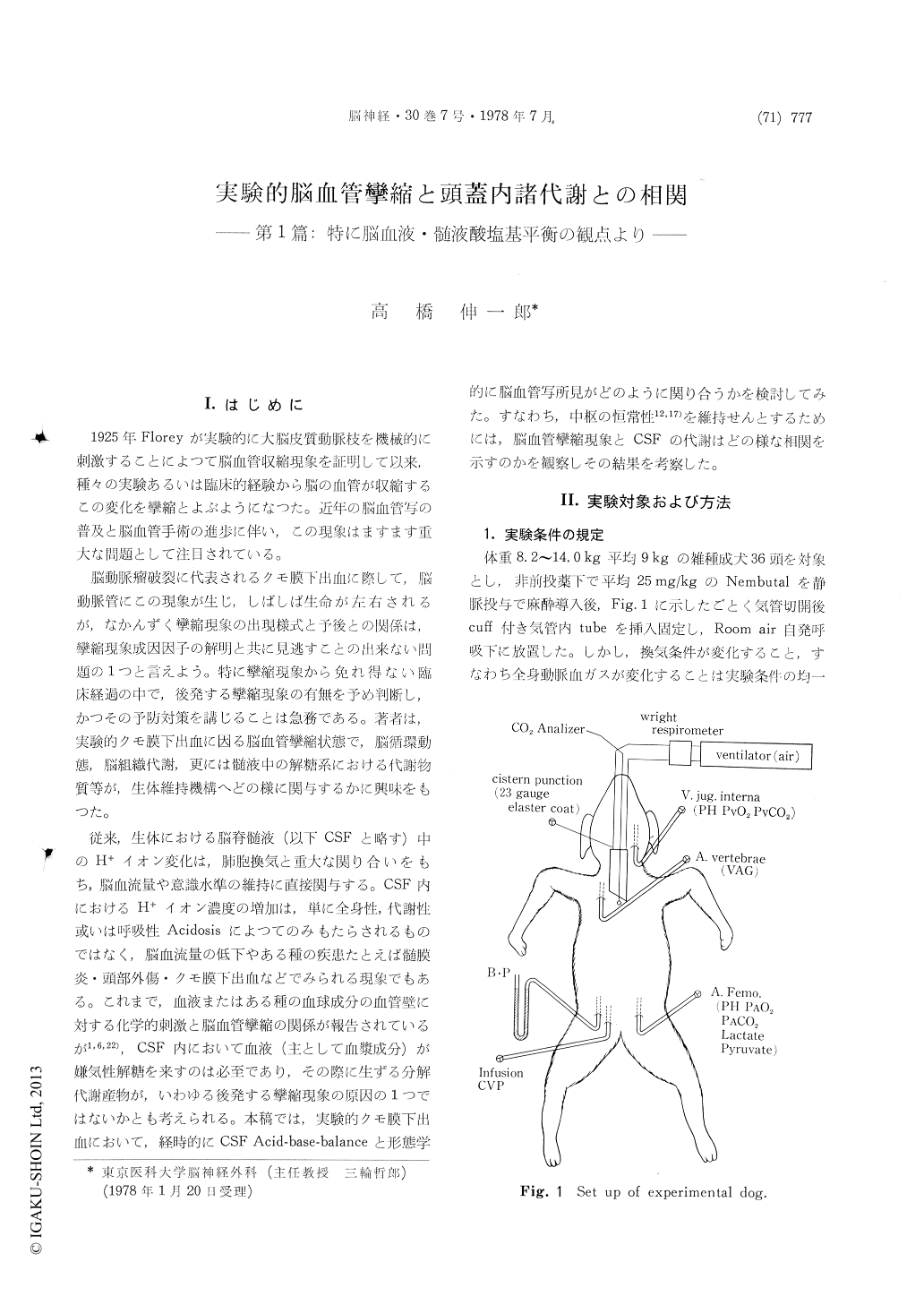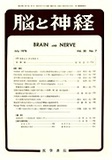Japanese
English
- 有料閲覧
- Abstract 文献概要
- 1ページ目 Look Inside
I.はじめに
1925年Floreyが実験的に大脳皮質動脈枝を機械的に刺激することによつて脳血管収縮現象を証明して以来,種々の実験あるいは臨床的経験から脳の血管が収縮するこの変化を攣縮とよぶようになつた。近年の脳血管写の普及と脳血管手術の進歩に伴い,この現象はますます重大な問題として注目されている。
脳動脈瘤破裂に代表されるクモ膜下出血に際して,脳動脈管にこの現象が生じ,しばしば生命が左右されるが,なかんずく攣縮現象の出現様式と予後との関係は,攣縮現象成因因子の解明と共に見逃すことの出来ない問題の1つと言えよう。特に攣縮現象から免れ得ない臨床経過の中で,後発する攣縮現象の有無を予め判断し,かつその予防対策を講じることは急務である。著者は,実験的クモ膜下出血に因る脳血管攣縮状態で,脳循環動態,脳組織代謝,更には髄液中の解糖系における代謝物質等が,生体維持機構へどの様に関与するかに興味をもつた。
Cerebral vasospasm, cerebral metabolism and the acid-base-balance of blood and cerebrospinal fluidof dogs were studied during and after the experi-mental subarachnoid hemorrhage. Subarachnoid hemorrhage was induced by infusion of fresh blood into the basal cistern through a small craniectomy in the base of the skull.
Eighty adult mongrel dogs were used. Of these a complete recording was obtained in 32 cases under the constant controlled ventilation. The samples of the blood and cerebrospinal fluid (CSF) were obtained repeatedly at the interval of 1 to 3 hours from the Polyethylene tube inserted into the cis-terna magna subarachnoid space, carotid artery and internal jugular vein. During these procedures, the luminal size of the intracranial basal artery was measured angiographically.
Vasconstriction of the cerebral arteries in response to experimental subarachnoid hemorrhage had a biphasic course, an acute phase (the vasoconstrictive phenomenon which lasts less than 6 hours) and chronic phase (the revasoconstriction occured and continued more than 24 hours after the hemor-rhage).
The former was named "Released Group" which consists of 16 dogs and the later was named "Pro-longed Group" which consists of 20 dogs. In both group, pH and bicarbonate ion concentration of CSF were found to be reduced by twenty percent of the normal value on the average about three hours after subarachnoid hemorrage, apparently reflecting occurence of early cerebral vasospasm. Remarkable metabolic acidosis was seen in CSF of the prolonged group as compared with in cerebral blood.
The occurrence of A-V shunt was suggested in the cerebral circulation from the blood gas findings. The experimental results indicates that prolonged cerebral vasospasm phenomenon causes persistent hypoxic state in the cerebral tissue.
However, cellular metabolism of cerebral tissue will be probably maintained by oxygen supply nec-essary to cellular respiration through the blood-brain barrier from the cerebrospinal fluid.

Copyright © 1978, Igaku-Shoin Ltd. All rights reserved.


